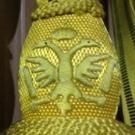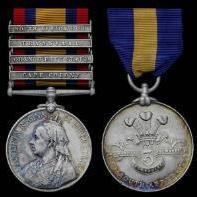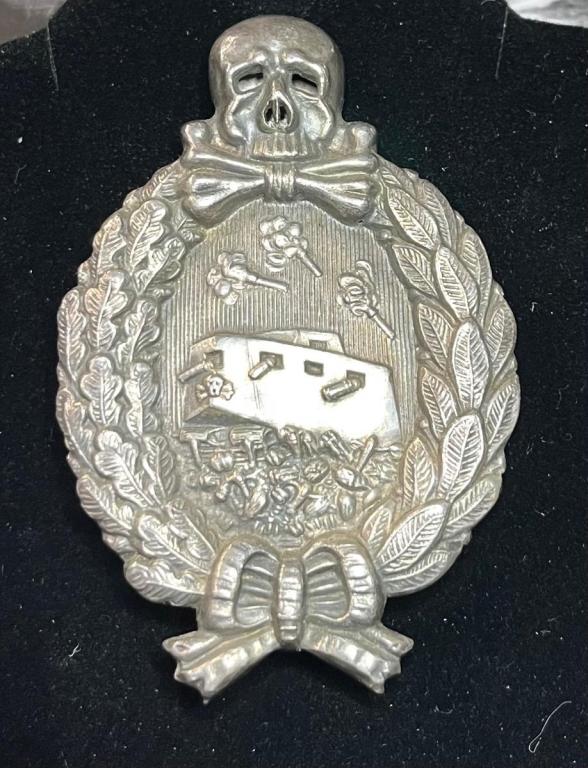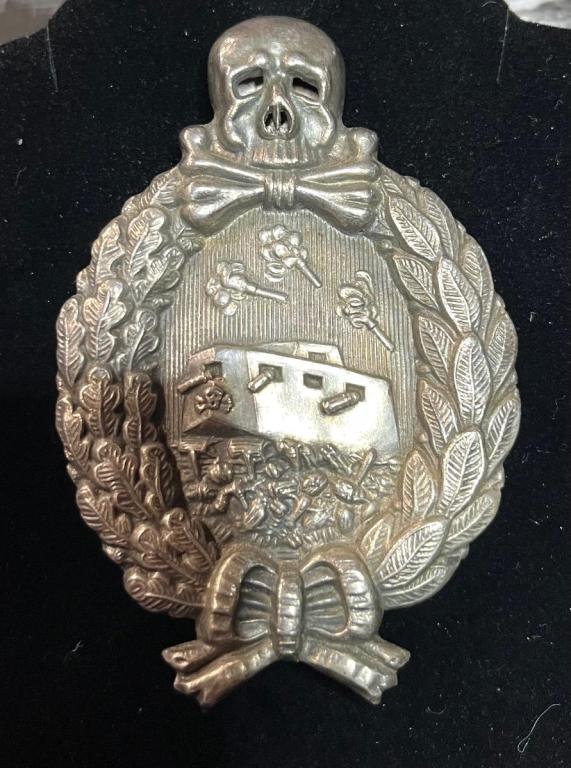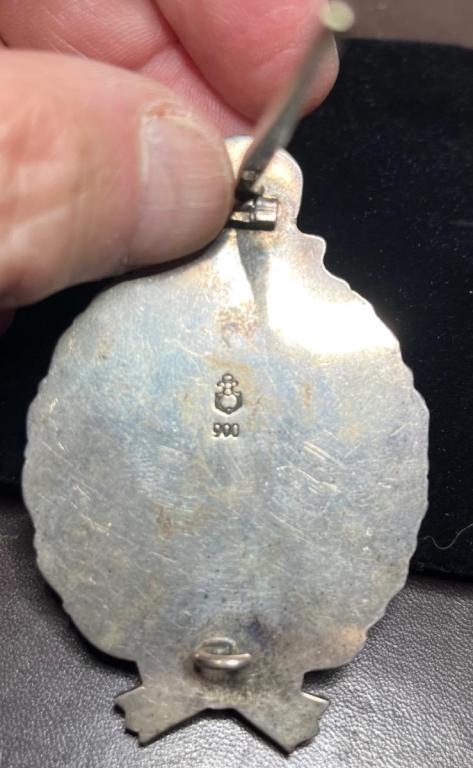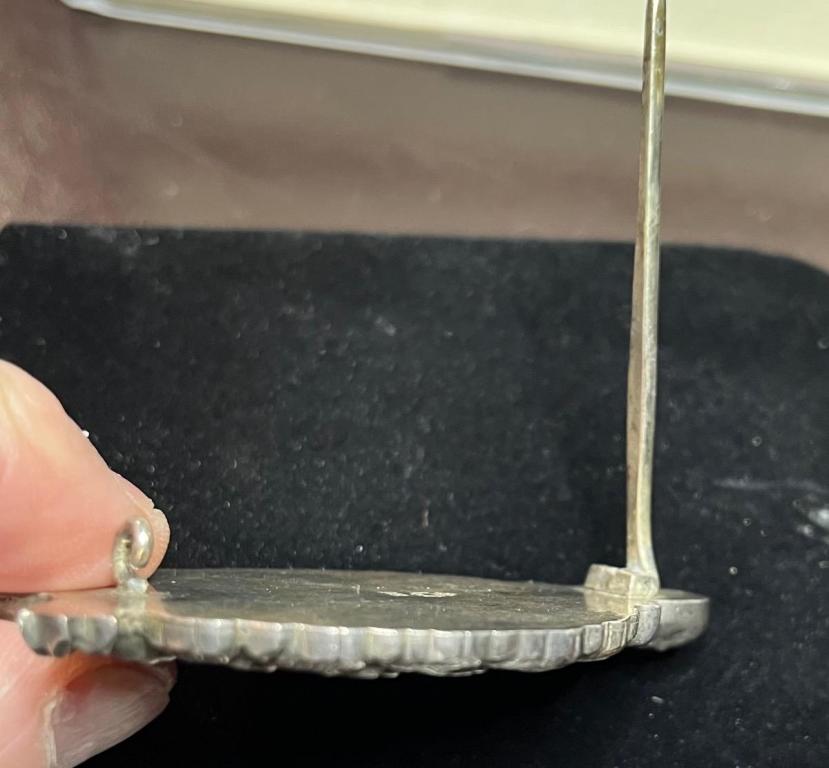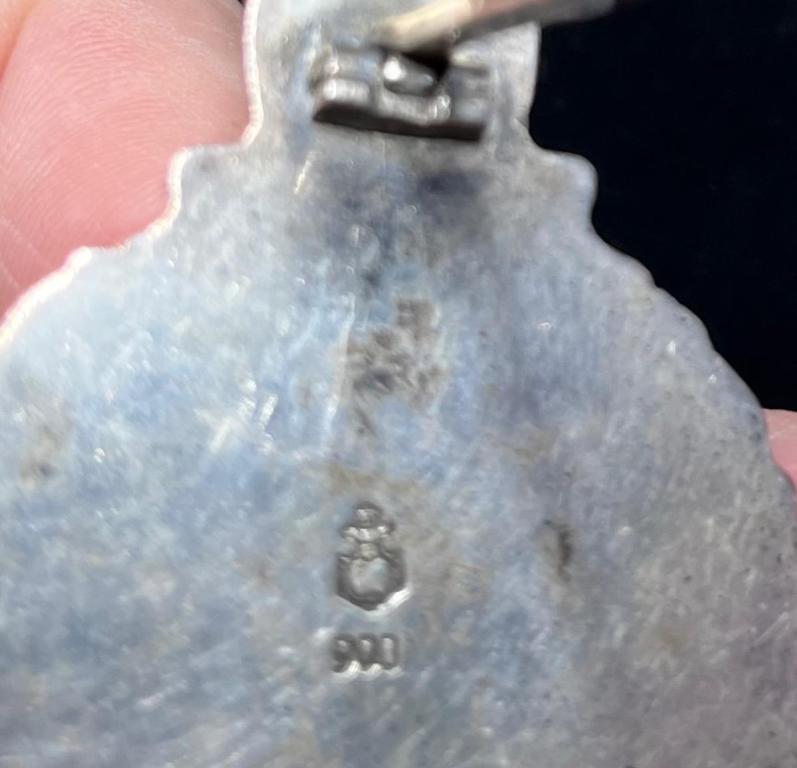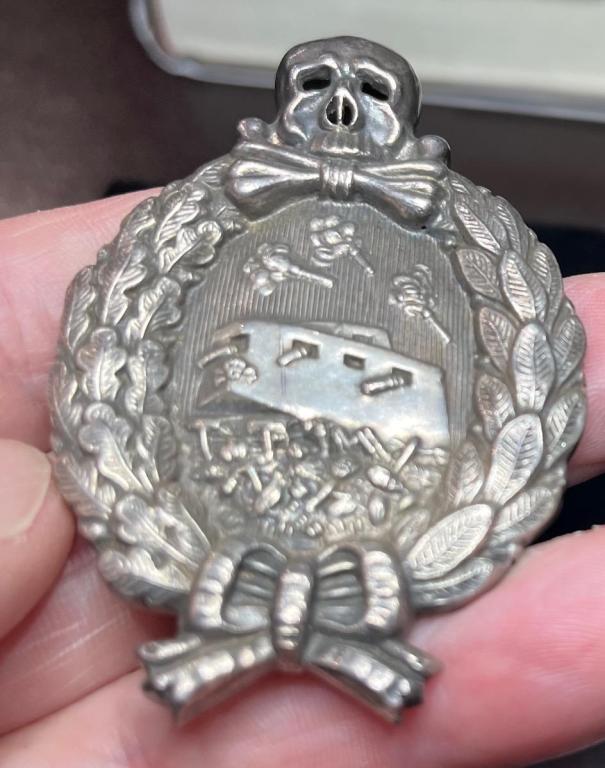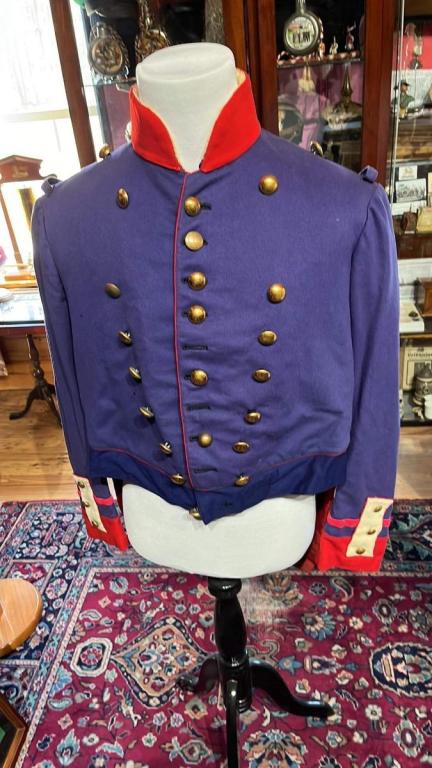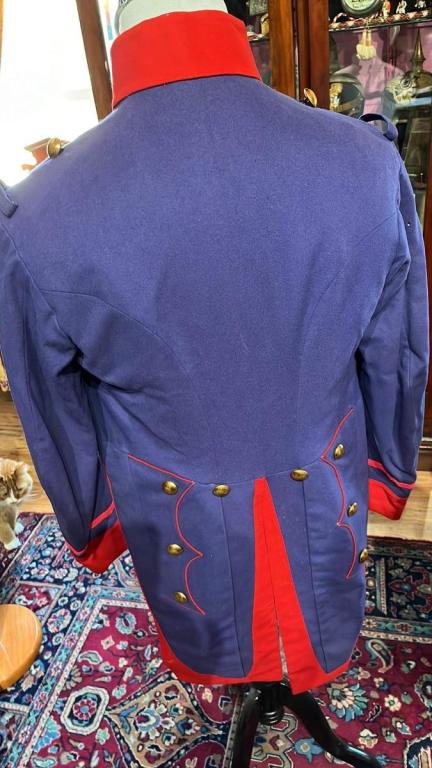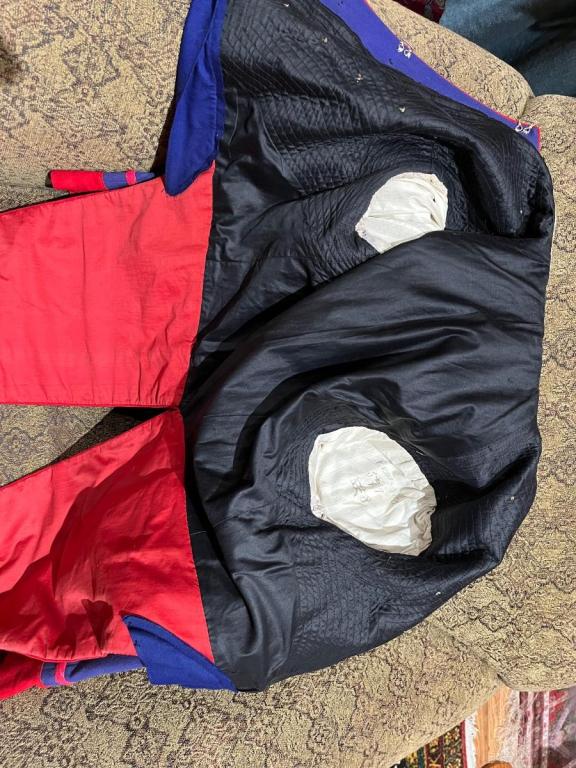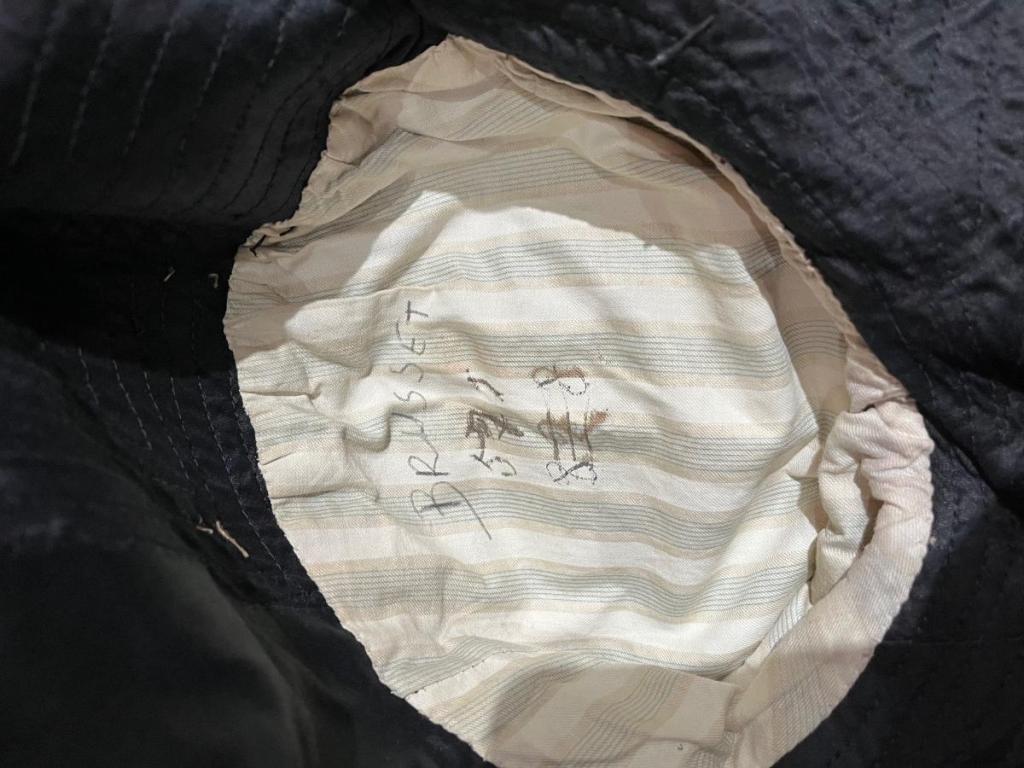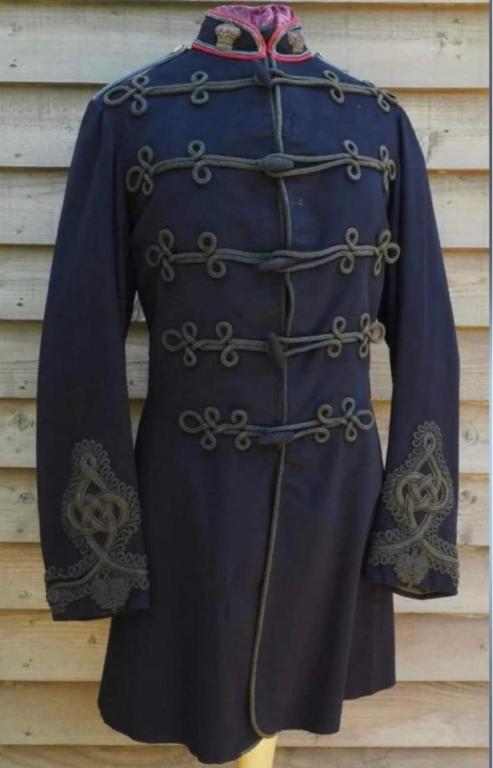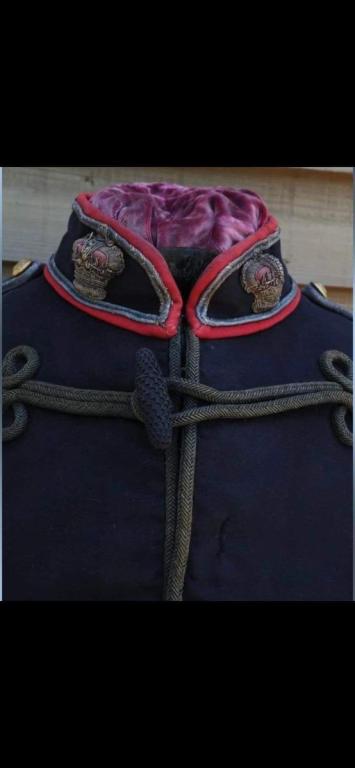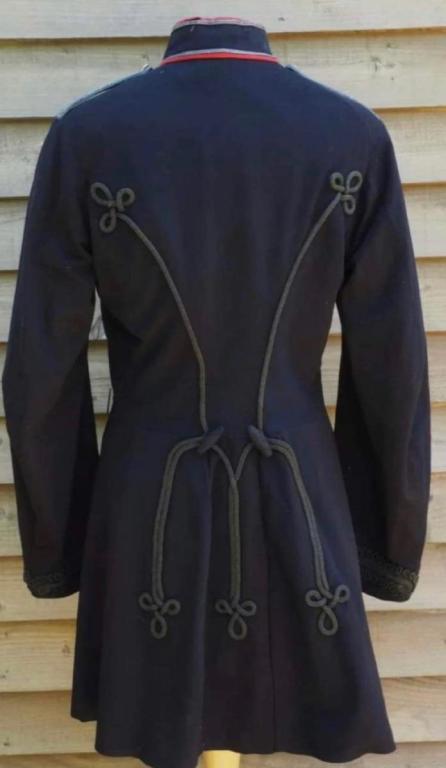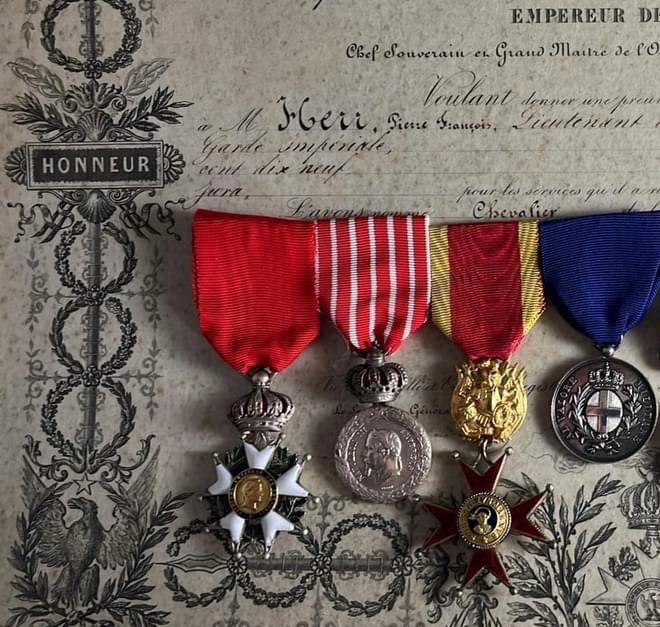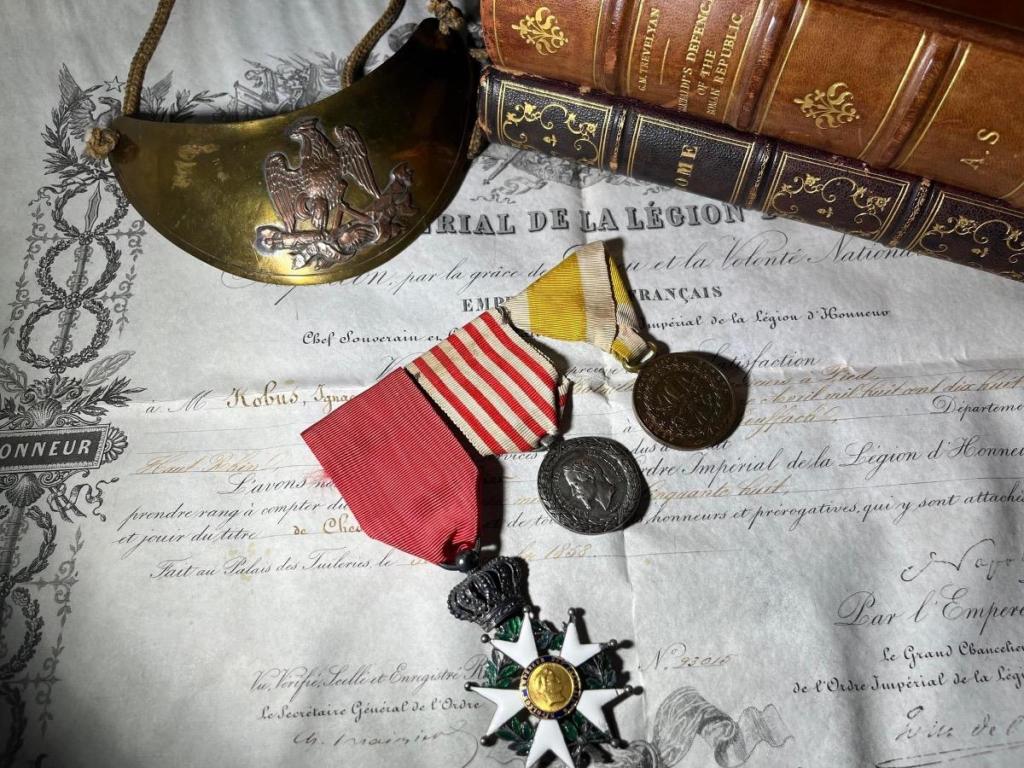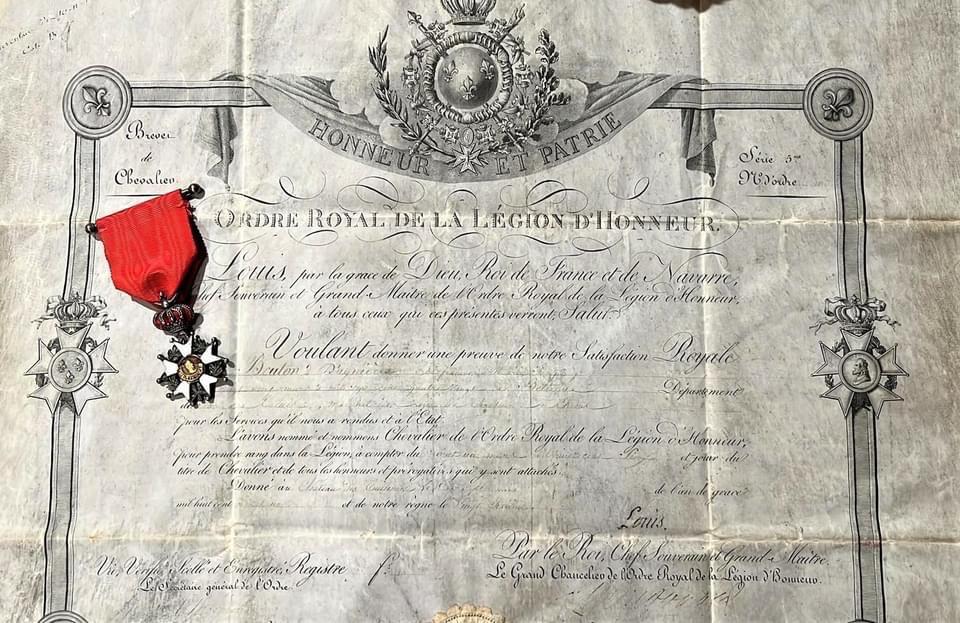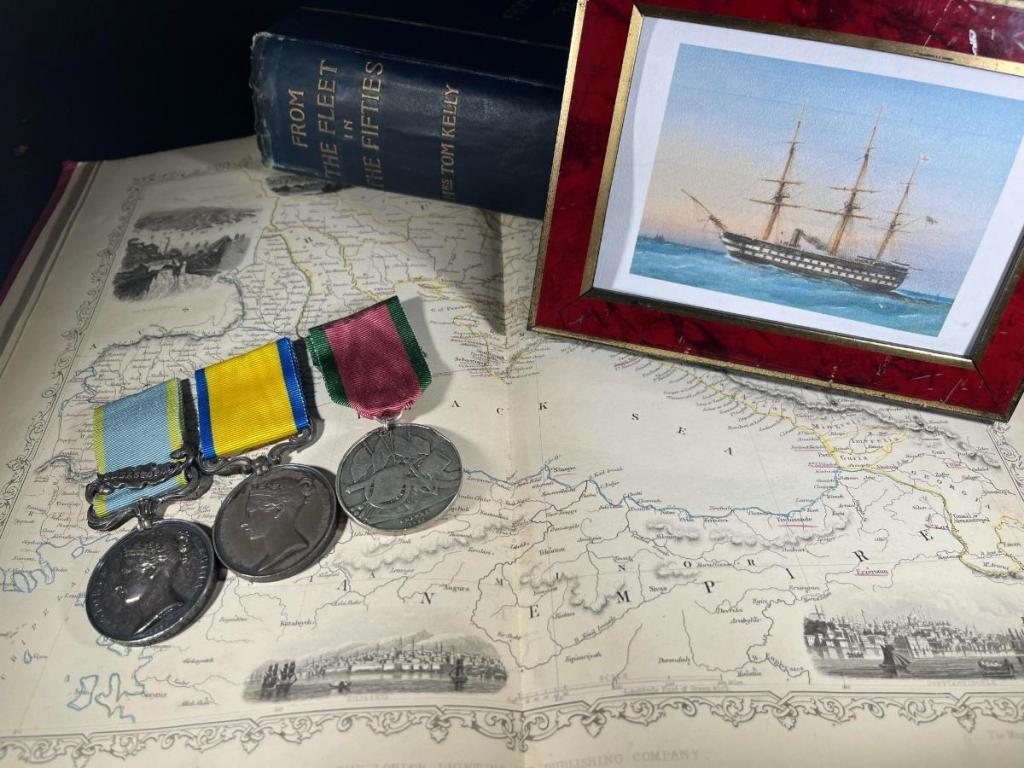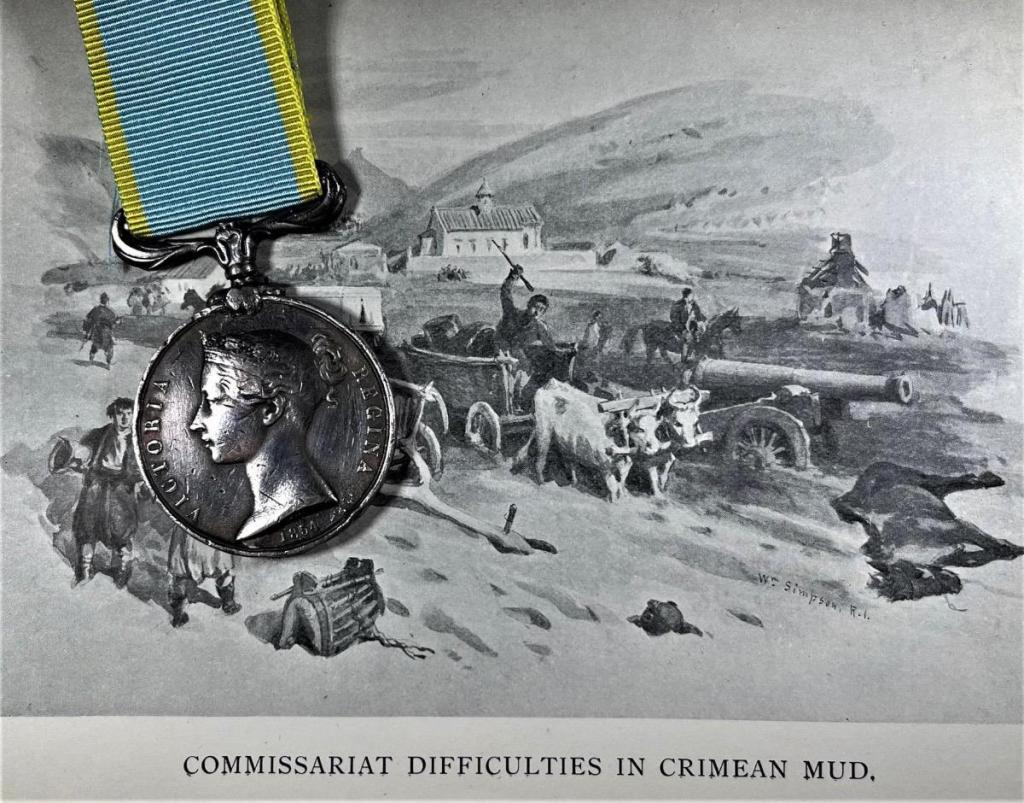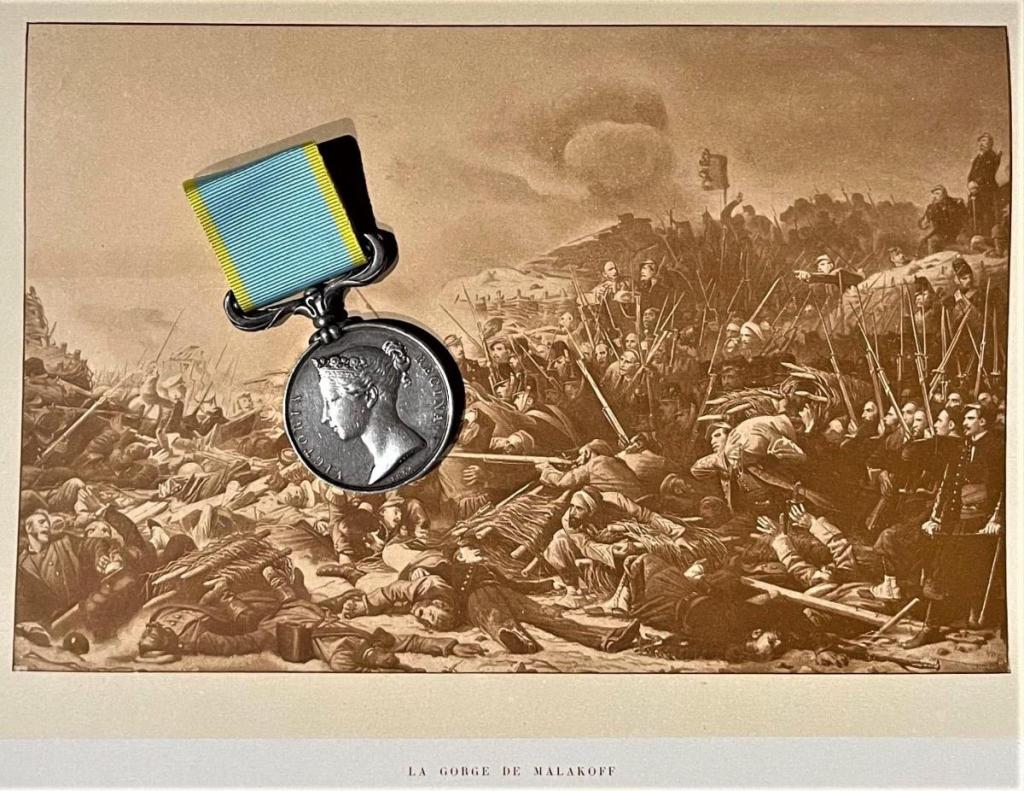-
Posts
2,470 -
Joined
-
Last visited
-
Days Won
2
dante last won the day on July 6 2023
dante had the most liked content!
About dante

Profile Information
-
Gender
Male
-
Location
Maine USA
dante's Achievements
-
dante started following Uniform to identify and Kampfwagen-Abzeichen 1921
-
-
While I understand this is most likely a anniversary reenactment piece , any idea what regiment it represents? thanks for looking
-

Unable to identify this uniform
dante replied to dante's topic in Great Britain: Militaria: Badges, Uniforms & Equipment
Thanks Tony, awesome research, the epaulette buttons are Artillery in gold, which doesn't add up....some people have identified as volunteer artillery, but if it was then surely silver buttons? What other pictures are you wanting, happy to oblige -
Crimea clasp Sebastopol, Engraved to “Major J.E. McKenzie” no unit, no one of that name and initials is in the Army list or Ancestry CRIMEA medal roll…have searched all online resources….welcome any assistance finding Major McKenzie ( while appreciating that he may not be entitled (maybe Turkish contingent) he must have at least existed?
-
Légion d'Honneur diplome and medals ; to Capitaine Pierre-Francois Herr Born 29 November 1819 Dole commune in the Jura department. Enlisted age 18 in 1837 aged 18. Served in the 40eme Regiment Infanterie de Ligne served in the 1852 expedition to Rome (Order of Saint Gregory). Noted in 1854 (aged 35) as being involved in 13 campaigns and 17 years service. Transferred to the Le 3e régiment de grenadiers Garde Imperiale est créé par décret du 20/12/1855 did not serve in the Crimea. Later served in the expedition in Italy (battle of Magenta en juin 1859) Second Italian War of Independence. Married 13 January 1864 (Wednesday), Orléans (45), to Céline GUILTEAU and Herr is noted as principal de chemin du fer mediterranean. Died 13 March 1879 Loir-et-Cher. Awarded médaille de la valeur militaire de Sardaigne 30 April 1860 Awarded Chevalier L'ordre de Saint-Grégoire Pontificaux, 20 November 1854 Awarded Chevalier La Legion d’Honneur 14 March 1857 Awarded French Italian War medal
-
Diplome and medals of Capitaine Ignace Kobus, born 15th April 1818, Rouffach a commune in the Haut-Rhin department in Grand Est in north-eastern France. Enlisted as a soldier in 1837 in the 44e Regiment de Ligne, promoted S and transferred Sergeant in 1841 and transferred to the 4e Battalion Chasseurs de Pied, promoted to Sergeant Major/Adjutant Sous Officer 1846 and then transferred to the 2e Battalion as a Sous Lieutenant in in 1848, The following year (1849), he was part of the Mediterranean expeditionary force sent to fight the Roman Republic and took part in the siege of Rome (Médaille du Siège de Rome)/ 1851, he embarked to Africa (Constantine) to participate in the conquest of Algeria. From May 1851, in May 1852 and from July1852 to November 1852, he took part in punitive expeditions against the Kabyle rebels. Promoted to Lieutenant in 1852 he remained with the Battalion until 1855 and in 1855 he was promoted to Capitaine with the tirailleurs 2e Regiment Legion Étranger based in Algeria and in 1856 joined the 1er Régiment Étranger. In 1857 he joined the 11e Battalion Chasseurs de Pied, he was awarded the Légion d'honneur in 1858 finally leaving Algeria in 1859. Took part in the Italian campaign In 1859, the passage of Ticino, at Magenta and at Solferino, where the regiments resisted the three charges of the Austrian cavalry. He married in 1860 He died on June 24, 1865, after contracting a fever while at camp.
- 1 reply
-
1
-
Diplome to Capitaine Pierre-Eloi Francois Marie Joseph BOUTON D'AGNIERES Chevalier de l'empire Français Légion d’honneur Pierre-Eloi Francois Marie Joseph BOUTON D'AGNIERES born 29th March 1780, Pas-de-Calais, Béthune, and belonged to an old noble family, most likely enlisted into the 13eme Regiment des Chasseurs a Cheval formed on the 5 March 1793 on the 20th of November 1796 (aged 16) later renamed 14eme Regiment des Chasseurs a Cheval d’Arras. The regiment had previously taken part in the War in the Vendée (1793) and Army of the North (1794). In November 1796 when Pierre-Eloi enlisted the regiment was part of the Armée des côtes de Brest, with its role to defend France from invasion (a good enough reason to enlist) In 1799 the regiment redeployed to Armée d'Italie a field army of the French Army stationed on the Italian border. Napoleon had taken command in 1796 and had purged the Armée d’Italie of royalists and improved pay and resupply. The regiment was deployed almost immediately and Pierre-Eloi and his regiment under Chef-de-brigade Jacques Boudet was engaged at the battle of Fossano an engagement between a Habsburg Austrian army commanded by Michael von Melas and a Republican French army under Jean Étienne Championnet. Pierre-Eloi was wounded by a sabre blow to the head during the battle and was awarded the sabre d’honneur In 1800 his regiment took part in the Battle of Montebello, in which the French defeated an Austrian army (9 June 1800) during this battle his left leg was shattered by shrapnel, and he was sent to the village of Bormida, in north-western Italy to recuperate. On the 2 November 1805 Maréchal des Logis Pierre-Eloi Francois Marie Joseph Bouton d’Agniers was awarded the Légion d’honneur by Napoleon (Nomination confirmed, Décret 17 March 1821). He returned home to Bethune in 1906 and refused a military pension as his family was wealthy He married Mélanie Aimée Joseph DUPUICH in 1807 (Children Mélanie 1808, Alfred 1820 and Constant Eloi 1815). In 1807 he enlisted as Adjudant Major de la Garde Nationale d'élite du Pas de Calais, as a Captain-Adjutant-Major he takes part in the Escault campaigns 1809-10, Captain of the urban cohort of Béthune 28-1-1814 (Napoleon abdicates April 1814). On Napoleons escape from Elba and on his orders, he musters 100 Royal volunteers and leaves for Lille on 25-3-1815 to defend the King but stops at La Bassée because the king has left. In 1817 appointed by the king member of the municipal council of Bethune. Captain of the Grenadier Company of the National Guard of Béthune in 1833 in command of 130 men and 120 gunners de Béthune Commander of the detachment of volunteers who went to the aid of Paris from 23 to 26-6-1848, during the French Revolution of 1848 (also known as the February Revolution) that ended the July Monarchy and established the French Second Republic. He returned home to his business as a merchant brewer, Eloi died at home in 1854 His son Constant Eloi was born in 1815 and became a Medicin Major with the 125e régiment d'infanterie and was awarded the Légion d’honneur in 1869 and served in the Crimea, China, and Italy, in Algeria 1840 distinguished himself with a squadron of hussars at the massacre of Sidi Brahim he took part in the Franco-Prussian war and was in charge the ambulance of the Church of St Elisabeth in Paris during the Paris Commune.
-
Baltic medal, Crimea medal clasp Sebastopol and Turkish medal to William Cushway, born 25 Dec 1833 from Bethnal Green, London. Enlisted 5th June 1954 for 10 years as an Ordinary Seaman, HMS Waterloo, Commanded (until paying off at Sheerness) by Captain Frederick Herbert Kerr. Joined HMS Hannibal and invalided in 1856. HMS Hannibal was originally planned as a 90-gun second rate ship of the line, to be built at Woolwich Dockyard. She was ordered on 14 May 1840, but cancelled and re-ordered. This ship was also named HMS Hannibal and used the new screw propulsion technology. She was a 91-gun second rate, built at Deptford Dockyard by Charles Willcox, Master Shipwright, and launched on 31 January 1854. She served in the Crimean War, commanded by John Charles Dalrymple Hay. He was a coach builder by trade. He died in 1897 at the age of 64.
-
Deputy Commissary-general (Colonel) Ashley Cowper Ryland Crimea Medal (missing clasp Sebastopol) Ashley Cowper Ryland was born in Peckham in 1835 and enlisted in the Army on the 1st September 1855 with the Commissariat and Transport Staff and served in the Crimea, including the siege and fall of Sebastopol (Medal with Clasp, and Turkish Medal). the Commissariat and Transport Staff was in-charge of the Provision of food, forage and fuel for the army it infamously struggled to deal with the complexities of supplying the Army during Crimean War; in December 1854 control of the military functions of the Commissariat were transferred to the War Office. The Commissariat remained a uniformed civilian service until 1869 and those still serving were given military ranks. After the Crimea, Colonel Ryland served in Australia and Tasmania, where the Commissariat Department had responsibility for the provisions of military forces, the few remaining convicts, and lunatics. He married Jessy Louisa Ewing in 1860 and in 1870 was posted to Ceylon until the 1880s when was then sent to Egypt until he Retired 1888. Returning to the UK he Died in 1913 in Upper Norwood, South London
-
4040 Private Lot Gorman, 7th Royal Fusiliers, Crimea medal, depot impressed (The medal was found in the USA with the clasp and suspension missing, repaired with original parts) 4040 Private Lot Gorman, enlisted in 13th February 1855 and was embodied on the 1ST May and was sent to Malta on the 4th May and entered the Crimea on the 2nd July 1855. On the 8th September 1955 the final British assault on the Redan, it was a bloody failure hundreds fell cut to pieces by grape and cannister, losses were huge. However the French Guard Imperial assault on the Malakoff was a success and the fort and Sebastopol fell. It was during this assault that Lot was seriously wounded, he was carried off the battlefield and put on board a ship for the 299-mile voyage from Sebastopol to the hospital at Scutari. The records show he made it the hospital but succumbed to his wounds. We have no information on who Lot was, where he came from or if anyone at the time missed him.
- 1 reply
-
1
-
Crimea medal, Named “BINET” “3ART” and the Matricule number “4633” Soldat Binet served with the 3ème Régiment d’artillerie in the Crimea from 1854 and 1855, including the siege of Sevastopol. In 1859, the regiment took part in the victory alongside the Franco-Piedmontese troops at Solferino during the Italian campaign (unable to confirm Binet served in Italy). Sadly, as yet I have not been able to get access to his file held at Service Historique de la Défence but I have his file number (GR 36 YC 104) which will show his medals, clasps and Battery. When time came to distribute the Crimea Medals, 3ème Régiment d’artillerie was issued a total 1405 medals. In 1855 At the time of compiling the regimental medal list, 1099 Soldiers had received the Medals – with still pending 306 to be delivered. They were collectively entitled to: 1405 Sebastopol Clasps, 79 Alma clasps, 5 Balaklava clasps and 5 Inkermann clasps. So we are 100% sure that Binet got the Clasp "Sebastopol" Clasp. Will update as soon as more information is available.
-
Single named Crimea medal (entitled to Sebastopol clasp) to Frenchman Jacques Henri Lecompt, 2e Voltigeurs de la Garde, born 13th April 1829 in Saint-Calais a commune in the Sarthe department in the region of Pays de la Loire in north-western France. He originally enlisted in 1850 and transferred to the 2e Voltigeurs de la Garde in 1854, sent to the Crimea He was wounded (left arm) by shrapnel in the trenches during the siege of Sebastopol in the night from 21std to 22nd August 1855. 31st Discharged in 1856 and received a certificate of good conduct. The 2nd Regiment of Voltigeurs of the Guard was created in 1854. One of its battalions was sent to Crimea and landed there on 28/1/1855, the entire regiment joined it in May and distinguished itself during the capture of the works of May 22, 1855, by losing 14 officers and 300 men.




